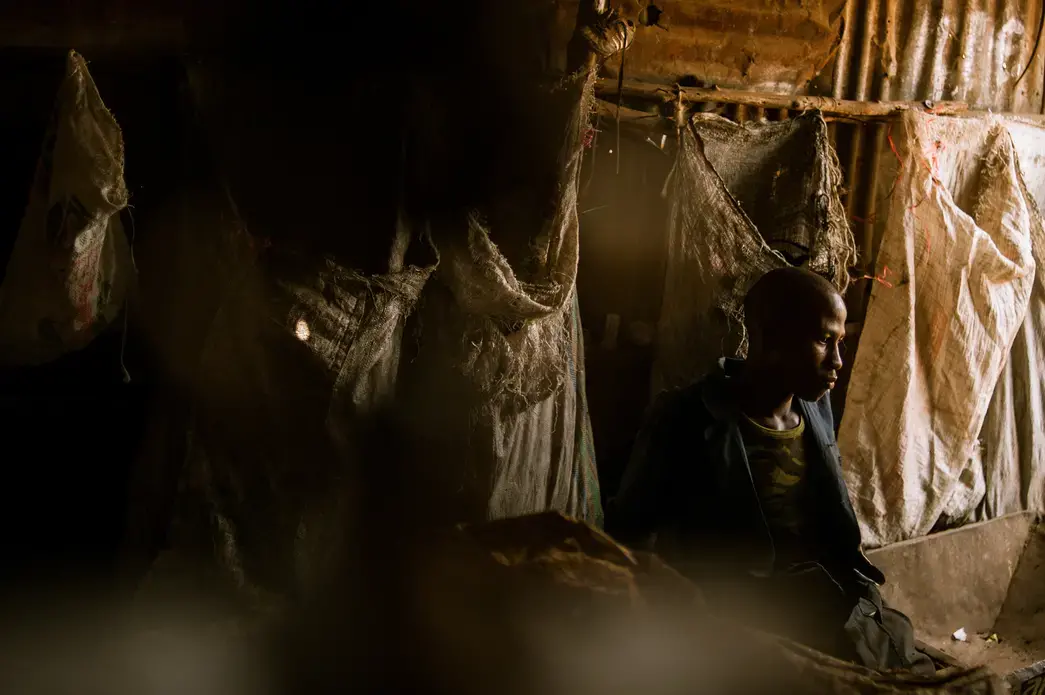As dawn neared and the light grew, the scene at a municipal dump outside Nairobi, Kenya, was hard to imagine.
Otherworldly sunlight filtered through biogas steam and smoke from burning chemicals and plastic. The smell of rotting debris from 4 million people, piled up over four decades in this dump, overpowered the nose and carried with it substance and density that clung deep inside the throat. Thousands of scavenging, prehistoric-like storks cawed and spread their massive wings. Pigs, brawling dogs and a menagerie of lesser birds picked through the garbage side by side with hunched-over men and women. This hardly seemed like a place for humans to live and work and eat.
I came all this way to better understand Kenya's Dandora Municipal Dump Site, the only waste site in Nairobi, east Africa's most populous city. For the people who work here, the conditions are among the worst I've ever seen. The neglect and disregard for their lives should be unacceptable. Yet the mountains of garbage that sustain them are also endangering their lives and those of their children.
To search for recyclable material to sell, Rahab Ruguru rummages through the smoldering debris with a piece of rebar she uses as a makeshift rake. "Working here is how I am able to feed my children," said the 42-year-old mother of six. "Of course it is not a usual job. Dodging pigs, used condoms, eating what I find; no, it's not good for me. But it is a job and I have to persevere."
Ruguru and the other pickers – an estimated 6,000 people – scavenge the sprawling 30-acre dumpsite from 5 a.m. to sundown. They make about $2.50 a day. They exist on the lowest rung of the economy, an informal chain of middlemen and women, working in horrific conditions, doing the dirty work for recycling companies. They sort and place into large sacks material that cannot be eaten, but can be sold for recycling. Metal, rubber, milk bags, plastics, bones and electronics tend to be among the most sought-after material.
Walking back to her house on the edge of the dumpsite, Ruguru heaves the day's material in a trash corral connected to her house, a 10-foot-by-12-foot shed of patchwork tin. The smell of her home is no different than that of the dump. Here, she will better sort the material she has found.
Community buyers purchase their day's work at nearby weigh stations, eventually selling a larger aggregate of material to truck drivers who are paid upon delivery by the recycling companies.
This largely invisible ritual continues despite international environmental law that stipulates the dump should have closed 22 years ago. The Nairobi city council declared the dump full 11 years ago. Over the next five years, the city hopes to decommission the site, which is raising a debate between the haves and have-nots of this east African boomtown.
"If you look at economic growth statistics, then you might think things are getting better, but this wealth is clearly not trickling down to the poor," said Aggrey Otieno, a human-rights activist born in Korogocho, one of three slums bordering Dandora. "We have a lot of people investing in Nairobi. Malls, KFCs, Apple stores, factories; they are being built citywide, but without a solid waste management plan, without a focused desire to truly improve the living standards of all Kenyans, we will be dealing with these problems for a long time."
A 2007 study by the U.N. Environmental Program is among the most comprehensive analyses of Dandora's impact on the surrounding communities. The report showed that Dandora soil samples contained dangerously high levels of lead, and found that 154 of the 328 children living near the dump suffered from respiratory problems and had concentrations of lead in their blood that exceeded internationally accepted levels.
International organizations have long been working to bring attention to these neglected voices – including Amnesty International's report "Kenya: The Unseen Majority: Nairobi's Two Million Slum-Dwellers" and the World Bank Institute's project "Putting Nairobi's Slums on the Map" – yet this attention has often focused primarily on Kibera, the city's largest slum. On the other side of the city, however, reside more than 1 million people living in informal settlements around Dandora.
The debate isn't just about trash – it's a debate that captures how Nairobi and other fast-rising African cities treat their most disadvantaged citizens, Otieno said. And that is why a seemingly mundane municipal issue like the fate of a trash dump has turned into a political flashpoint.
With a new constitution, accelerated advances in information and communications technology, and the recent discovery of oil, many are optimistic that Kenya will continue to be the regional powerhouse economy. Nearly two-thirds of Nairobi's population, though, will continue to live in the city's slums.
On the morning I arrived at the Dandora dump, a man named Macharia, who prefers to be called Tiger, was waiting for me in the dark at the entrance. A central figure in the cartel that controls the site, Tiger was my way in.
He proudly displays a pool table he moved to the center of the dumpsite and the shelter he constructed using scraps. Trash pickers pay 10 KSH – about 12 cents – a game to use the table during breaks and rainy weather.
While Nairobi's business district dithers and shirks responsibility for the fate of Dandora, Tiger worries about what will happen to those who depend on it should the government ever close the dump or really take an interest in their lives.
"What will happen to us? We are like these birds and pigs to this city," he said, gesturing toward the animals searching for food alongside the people. "They don't recognize us as people. They don't care what happens to us, and if they relocate this place, then we will have nothing."































